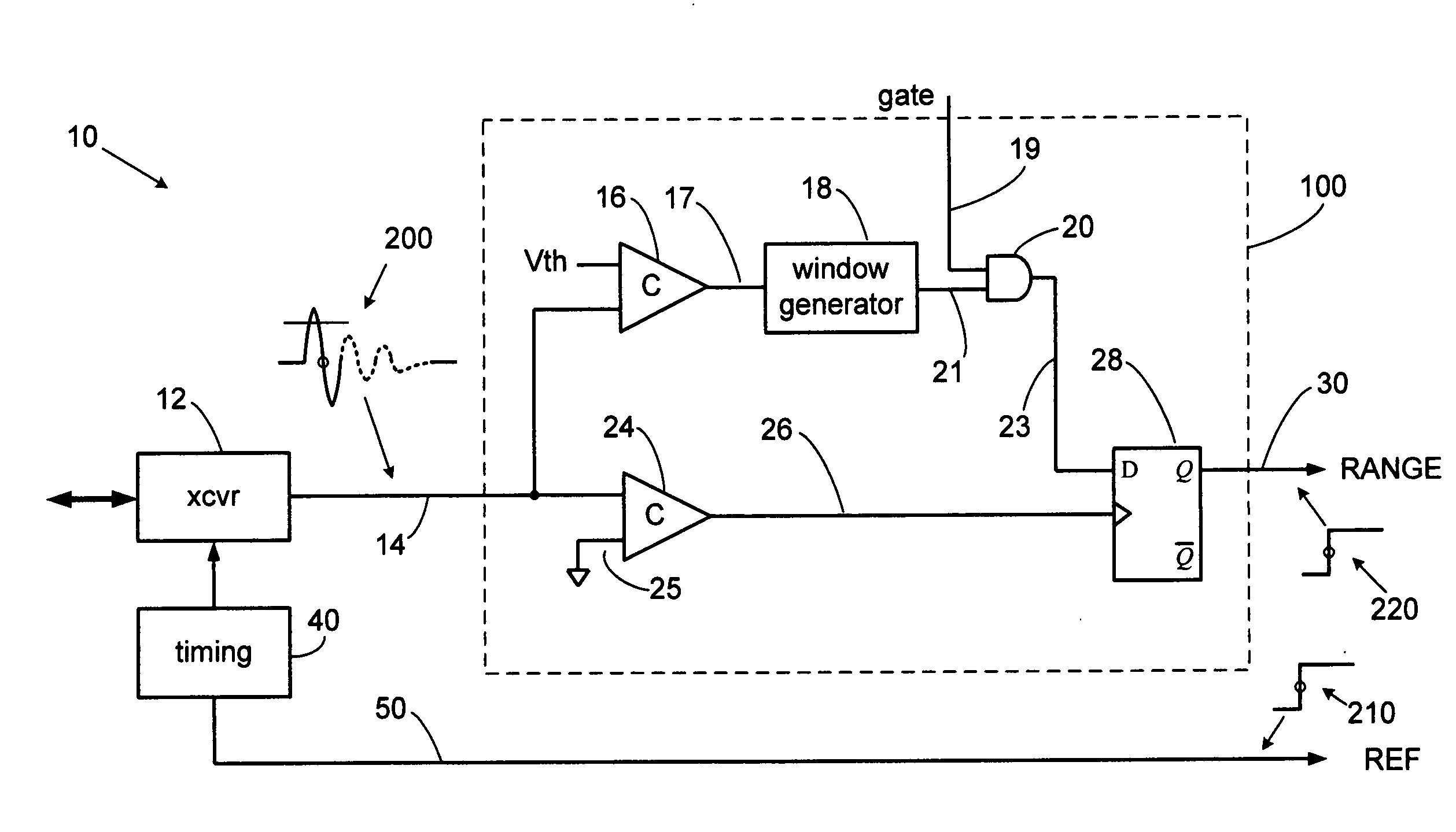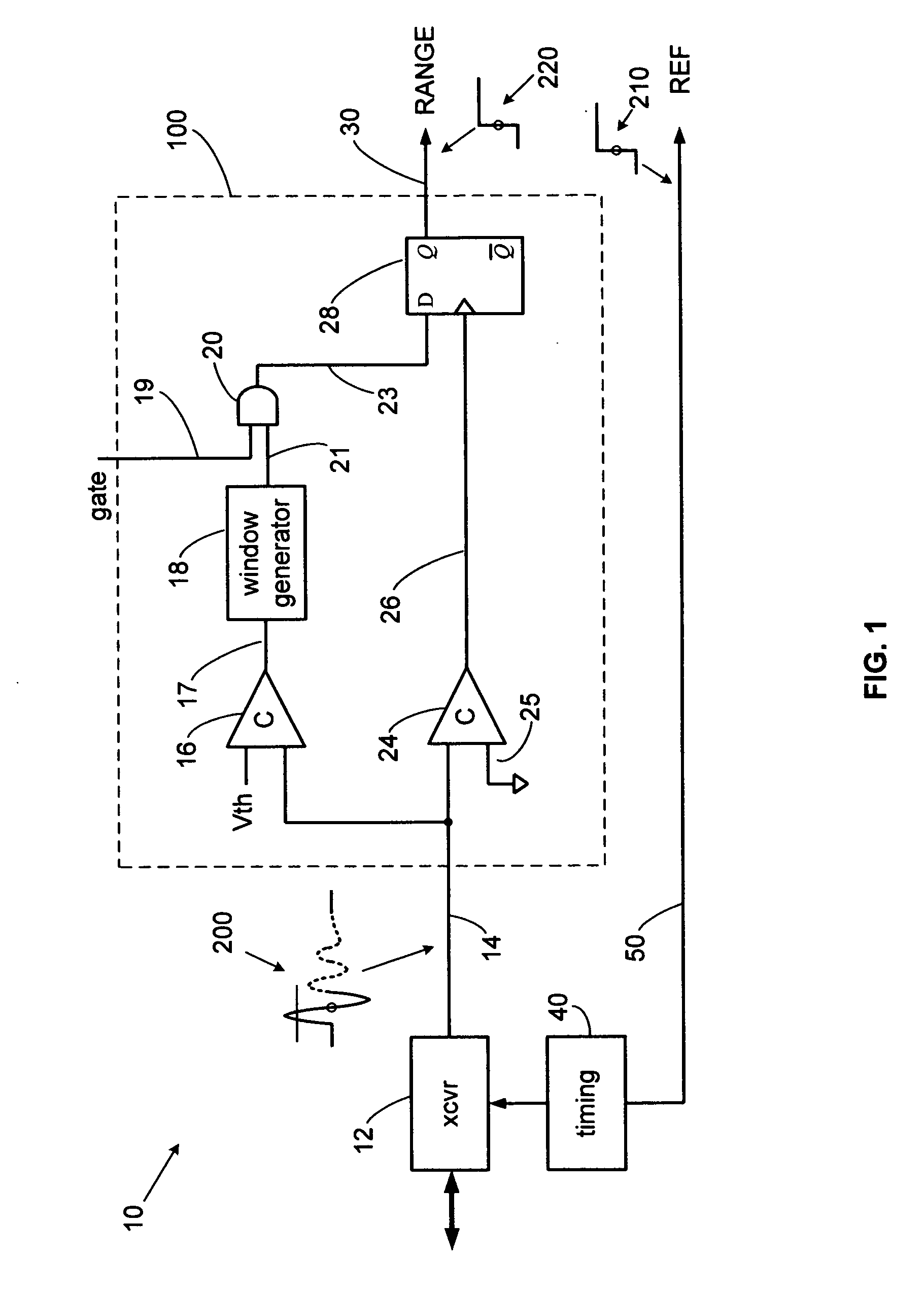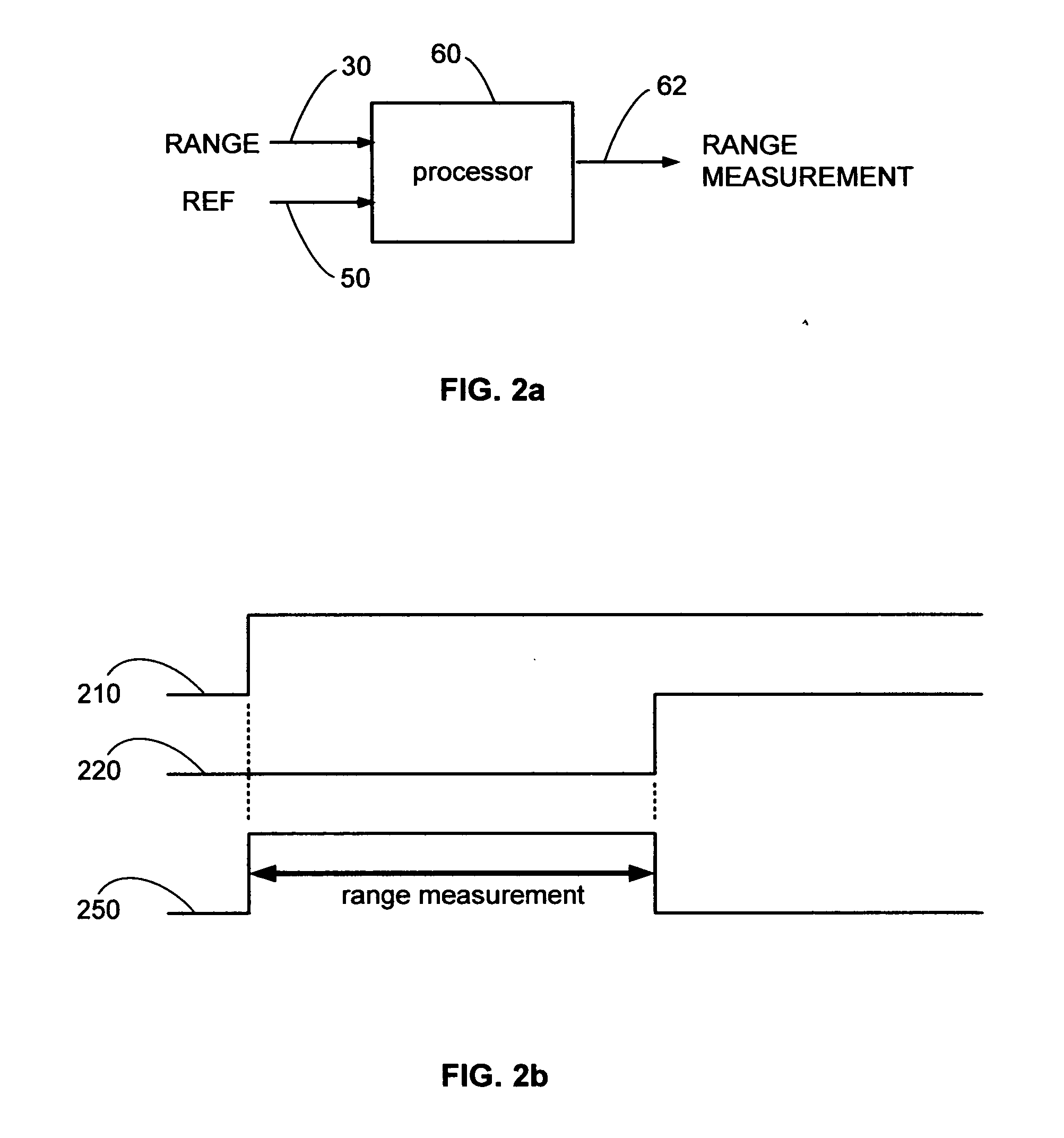Precision pulse detection system for radar sensors
a detection system and radar technology, applied in pulse techniques, instruments, amplitude demodulation, etc., can solve the problems of difficult, if not impossible, difficult, and difficult to accurately measure the range, and achieve excellent immunity to noise, high dynamic range, and high accuracy.
- Summary
- Abstract
- Description
- Claims
- Application Information
AI Technical Summary
Benefits of technology
Problems solved by technology
Method used
Image
Examples
Embodiment Construction
[0023]A detailed description of the present invention is provided below with reference to the figures. While illustrative component values and circuit parameters are given, other embodiments can be constructed with other component values and circuit parameters.
General Description
[0024]The present invention overcomes the limitations of the various prior detection techniques by detecting a selected zero axis crossing of an expanded time pulse. The selected zero axis crossing is detected immediately after a pulse lobe crosses above and then falls below a threshold and subsequently crosses the zero axis, which is the detection point. The threshold crossings are a precondition to zero axis crossing detection, thereby eliminating false triggering on sub-threshold noise. The accuracy of detection can be extremely high since the zero point is amplitude independent and often exhibits the highest voltage rate of change. Furthermore, a point where the voltage rate of change is highest is also ...
PUM
 Login to View More
Login to View More Abstract
Description
Claims
Application Information
 Login to View More
Login to View More - R&D
- Intellectual Property
- Life Sciences
- Materials
- Tech Scout
- Unparalleled Data Quality
- Higher Quality Content
- 60% Fewer Hallucinations
Browse by: Latest US Patents, China's latest patents, Technical Efficacy Thesaurus, Application Domain, Technology Topic, Popular Technical Reports.
© 2025 PatSnap. All rights reserved.Legal|Privacy policy|Modern Slavery Act Transparency Statement|Sitemap|About US| Contact US: help@patsnap.com



